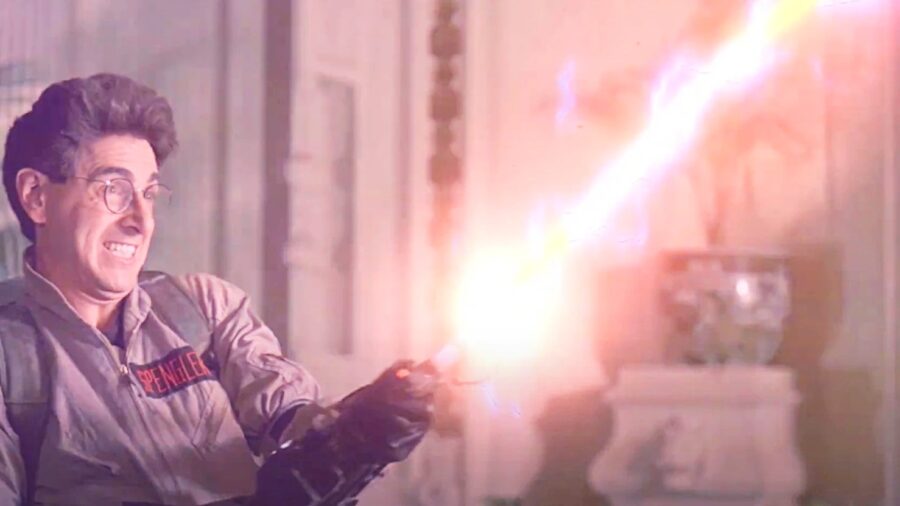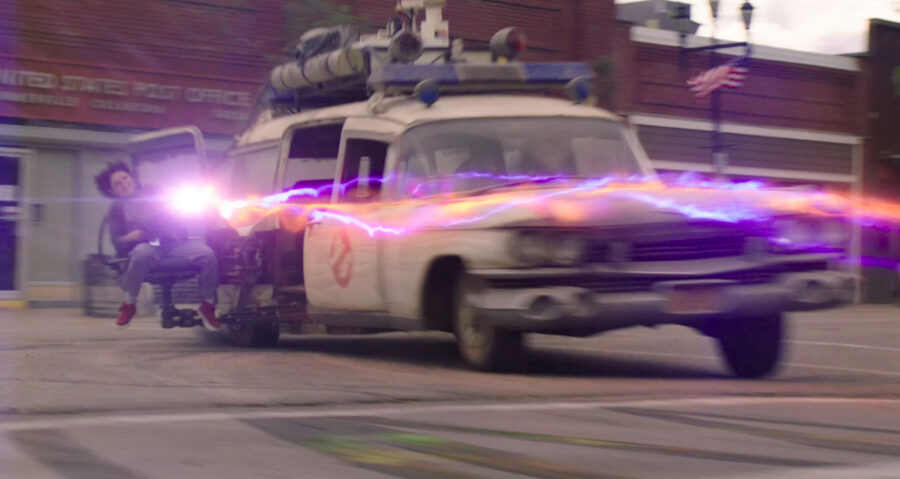How The Ghostbusters’ Proton Packs Work

We know that the Ghostbusters use Proton Packs to trap ghosts, and we know that you should never cross the streams, but have you ever wondered how these things even work? If you thought that the Proton Packs were just some pseudoscience movie magic, you’d be wrong, as the packs are actually partially based on real science.
While the 2016 Ghostbusters reboot wasn’t well-received, you can’t say the production team didn’t do their homework. They hired particle physicist and former MIT senior postdoctoral associate James Maxwell to advise on Proton Packs and how they would work, and it turned out he didn’t have to make too many adjustments to the original design.
The Ghostbusters’ Proton Packs Are Based On Real-Life Particle Accelerators.
The original Proton Packs used in the first two Ghostbusters films used backpack-sized particle accelerators attached to wands known as “Particle Throwers” that allowed the Ghostbusters to aim their streams. These accelerators ran on cyclotrons, which have a particle in the center of a wheel mechanism that gains speed as the particle travels outward as the cyclotron spins.
To update the design, Maxwell changed the Proton Packs to particle accelerators powered by synchrotrons, which are what power more modern particle accelerators as opposed to the accelerators that would have been using cyclotrons in the 1980s.

Synchrotrons bend particles in a ring-like path, and this is how the accelerator builds energy. In other words, the Proton Packs used in Ghostbusters are technically scientifically sound. The unrealistic part is condensing these accelerators down to the size of a backpack, but that can be explained by saying Egon Spengler and Ray Stantz are scientific geniuses.
The particle accelerators allow them to aim a stream of positively charged ions at ghosts, which traps the ghost’s negative energy.
The in-movie explanation for the Ghostbusters’ Proton Packs explains how they catch ghosts. The particle accelerators allow them to aim a stream of positively charged ions at ghosts, which traps the ghost’s negative energy while countering their invisibility or phase-shifting abilities. This allows them to hold the ghosts in place while they use a trap to lock them up.
However, the Ghostbusters also have to be careful with this incredibly powerful stream, as crossing them can cause what the movie describes as a “total protonic reversal.” Which essentially equates to ending all life and causing the Proton Pack’s user to explode all of their molecules. Not a great way to go.
While the recent 2021 sequel Ghostbusters: Afterlife reverted back to the cyclotron technology, it still made sure to update the packs for the modern age. In the film, Egon Spengler’s granddaughter Phoebe is led by Egon’s ghost to find the mini cyclotron he had been working on. It’ll be interesting to see if the Proton Pack gets another upgrade in the upcoming sequel to Ghostbusters: Afterlife.
Latest News On The Ghostbusters: Afterlife Sequel
We won’t have to wait long to see Ghostbusters: Afterlife 2 and the return of the Proton Packs, as the film is scheduled for a December 2023 release. The sequel stars Finn Wolfhard, Mckenna Grace, Logan Kim, Celeste O’Connor, Carrie Coon, and Paul Rudd, reprising their roles from Afterlife, along with Bill Murray, Dan Aykroyd, Ernie Hudson, Annie Potts, and William Atherton reprising their characters from the originals.
Newcomers to the cast include Kumail Nanjiani, Patton Oswalt, James Acaster, and Emily Alyn Lind.












